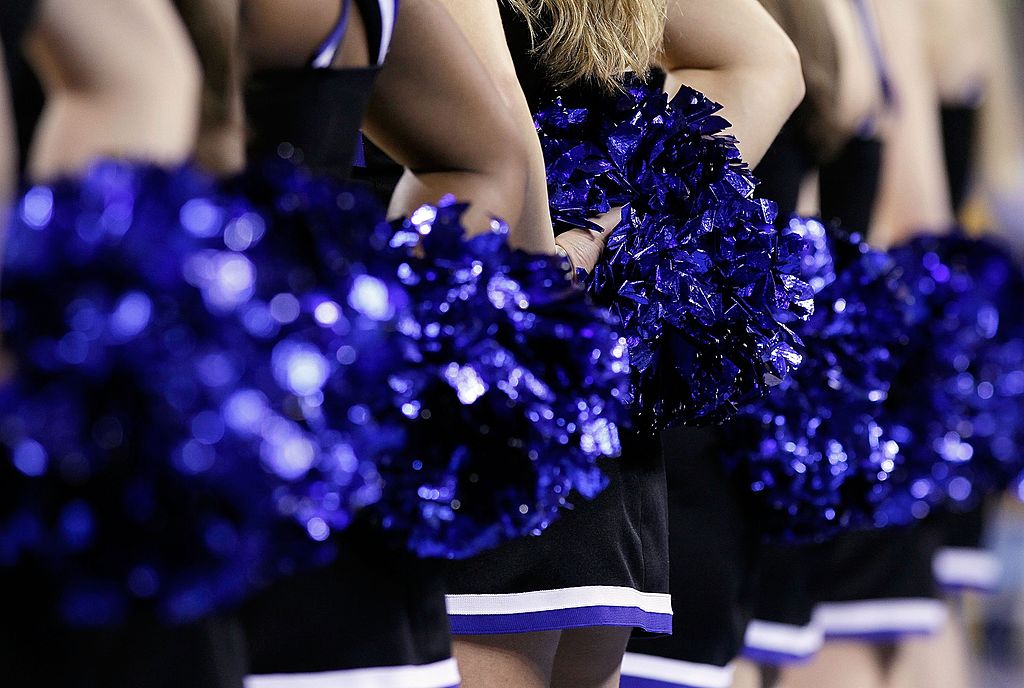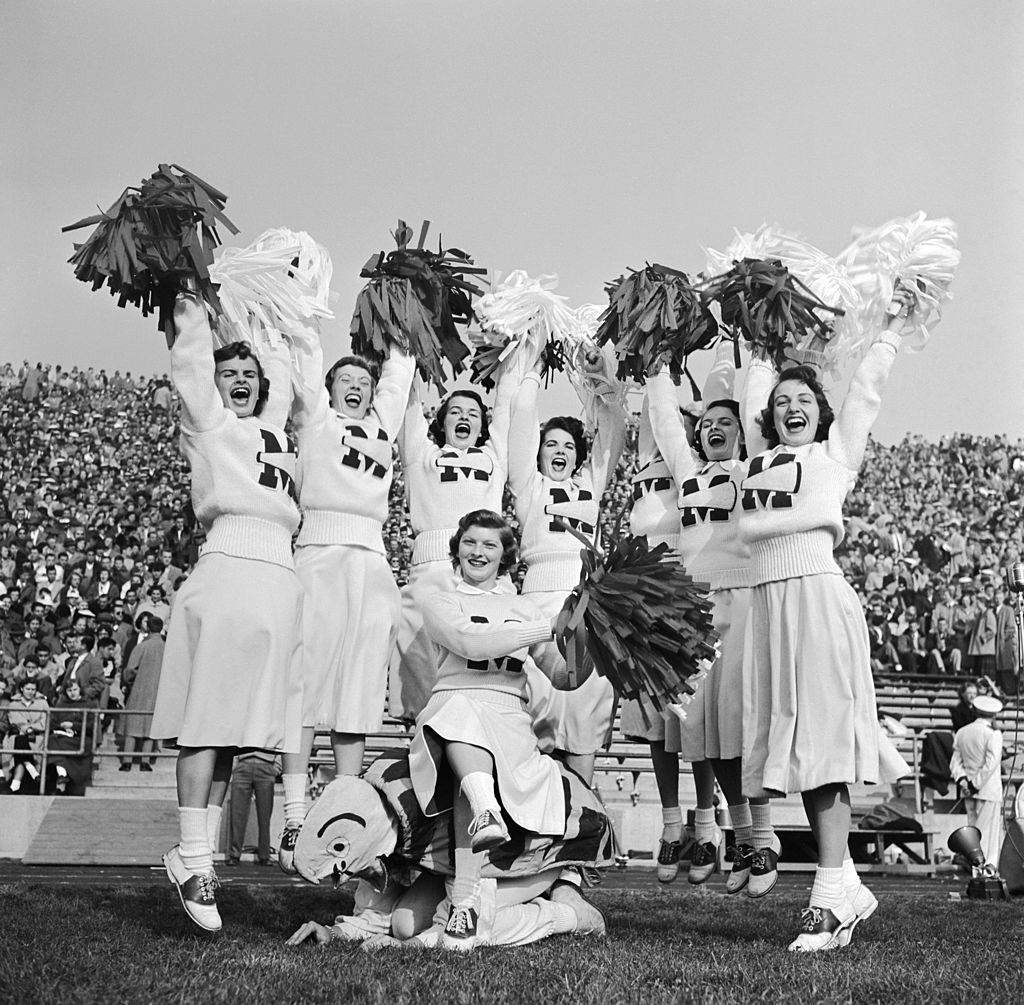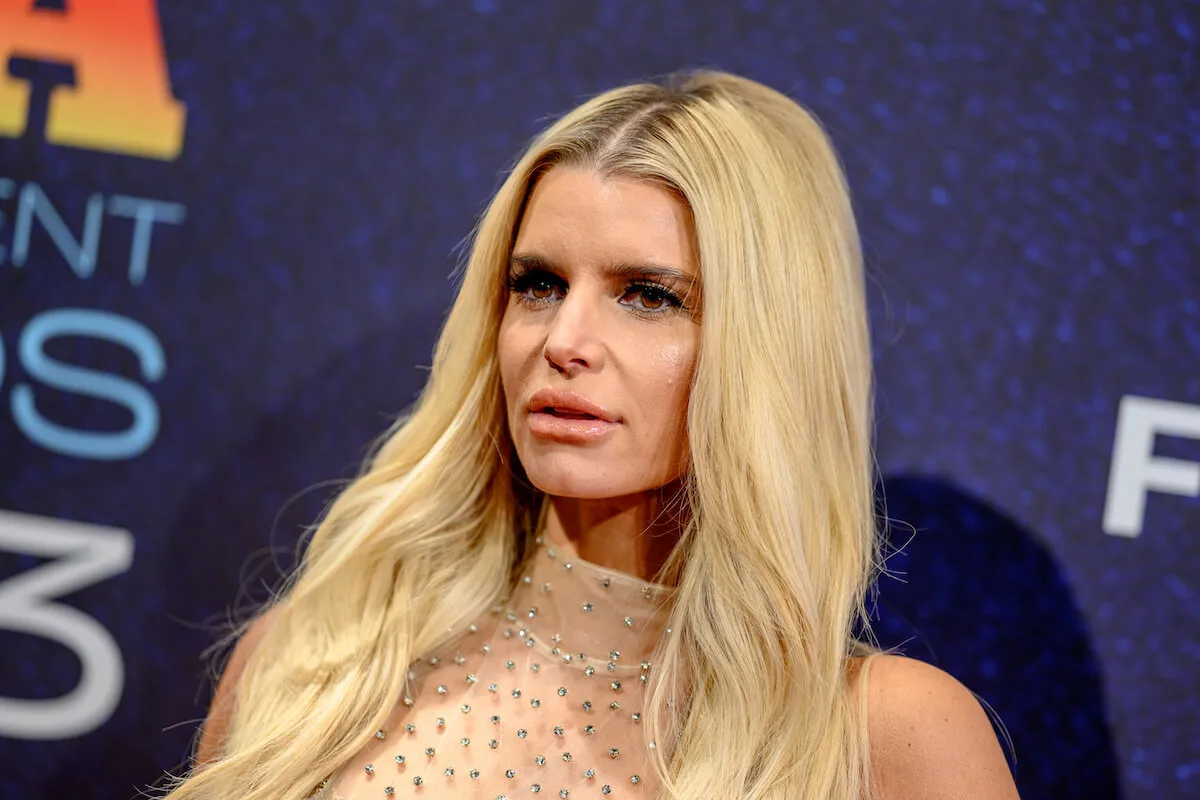‘Cheer’: Does The Netflix Series Promote a Dangerous Mentality Around Sports?
The series Cheer is a documentary show that follows an intensely competitive cheer team. Based out of Corsicana, Texas, the Navarro College cheerleaders are a sympathetic, talented bunch of young adults. The cast of Cheer, including fierce coach Monica Aldama, is what has made the show so popular. The cheerleaders from the Netflix show recently appeared on Ellen, and they are racking up the followers on Instagram. Even U.S. Olympian Simone Biles wants in on the Navarro Cheer lifestyle. “CHEER had me convinced after 2020 I’m trying out for Navarro Cheer,” the gymnast tweeted recently.
But some journalists are pushing back against the unbridled positivity around the show. In almost every episode of Cheer, one young athlete after another get injured. They consistently discuss on camera how painful and dangerous the sport is. Sure, the potential for bodily harm exists in almost every sport. But the lengths at which the cheerleaders push their bodies is extreme. Young women, often 100 pounds or fewer, are launched up into the air. Stunts and tricks are pulled while the athletes performing them have sprained ankles, pulled muscles, and maybe even concussions. The overarching message they get from coaches and fellow teammates is: push through it. As many writers and tweeters have argued, that’s a very dangerous mentality.

The public’s response to the ‘Cheer’ docuseries on Netflix
Jia Tolentino, a writer for The New Yorker, was one of the first to write about Cheer. While she enjoyed the cast of cheerleaders, Tolentino found some of the scenes hard to watch.
Tolentino was a cheerleader herself as a high schooler in Texas. However, she writes, “Much of what the Navarro cheerleaders do onscreen was barred from competition, if not physically impossible,” when she was cheering. And that was less than 20 years ago.

“In cheerleading, as in gymnastics, the upper difficulty level is being pushed higher at a thrilling and alarming rate,” Tolentino pens in the essay. The result is often a serious injury.
“The cheerleaders wear mikes as they throw their stunts,” she wrote, “and you can hear what it actually sounds like (something like a wordless bar fight) when bodies are thrown and caught with no protection beyond an intuited sense of physics and geometry and no padding except for muscle over bone.”
Watching ‘Cheer’: ‘I felt as if I had been pranked’
Amanda Mull agreed in her piece for The Atlantic.
In the context of the popularity of the show, Mull was alarmed by the “limited protection and medical support Navarro’s injured athletes appear to receive.” Watching Cheer felt like being “pranked” to Mull.
“I had given it a try after watching Twitter explode with effusive praise for Navarro’s athletes and the team’s take-no-prisoners female leader,” she wrote. “The actor Reese Witherspoon found Aldama so inspirational that she cried.” And while the Atlantic writer thought the young cheerleaders were amazing, she found several issues with the show.
Cheer doesn’t let their victories shine. Instead, the series tells one of the oldest, darkest stories in American sports—of athletes with no pay and little support breaking their bodies again and again, all for the greater glory of an authority figure they dare not question.
The power of coach of the Navarro College Cheer Team, Monica Aldama
That authority figure is Monica Aldama. This is how Tolentino describes the Navarro Cheer coach: “She rules the program with a fearsomely controlled demeanor interrupted by flickers of maternal warmth.”

This motherly-but-strict attitude creates a complicated relationship with her team members. Especially for the “quiet, eager-to-please top girl named Morgan.” The young cheerleader “looks at Aldama like a hopeful puppy, and gets emotional when she remembers how, at tryouts, Aldama remembered her name.”
Morgan continually says in the series that she would do anything for Aldama–and she means it. Mull writes: “Many of the cheerleaders refer to Aldama as a mom, and many of them need one.” She specifically calls out Morgan, who is “terrified to disappoint Aldama by seeking treatment for her ribs.”
“If Aldama understands that her motherlike role in her cheerleaders’ lives encourages them to sacrifice their safety for her—or if she disapproves of their tendency to do so—she never mentions it,” Mull writes.
Tolentino agreed in the New Yorker.
“Elite-cheerleading coaches can maintain an openly dangerous hold on their kids,” she wrote. “The Navarro cheerleaders concuss themselves with a smile, weigh themselves obsessively, do extra sit-ups at night so their abs will look perfect in the tiny uniforms that Aldama favors.”
In ‘Cheer’, Aldama helped the cheerleaders’ personal growth
But Aldama is dedicated to helping these young adults grow as humans. It’s part of what makes this all so convoluted. Mull argues that American sports culture has given Cheer a complicated context.
“A coach’s abuse of power is reimagined as an act of charity toward his or her young charge,” she writes. It’s often seen as “a deterrent from being slothful or playful or feeling too much unearned joy.”
Tolentino agrees, arguing that this ideology literally puts the Cheer team in danger.
“Throughout the season, Aldama uses Morgan’s attachment to her in a way that pushes Morgan into physical danger,” Tolentino argues. Morgan’s ribs are in extreme pain after Aldama runs a series of painful basket tosses. They “come to the brink of fracturing, though she tries to conceal it.” However, Aldama “also provides Morgan with a new confidence and a novel sense that she is needed and seen.”
The cast of the documentary series is constantly getting injured due to cheerleading stunts
Morgan pushes through her rib injury–as all the other athletes do, or try to do, for their coach. And when a cheerleader is injured, Aldama doesn’t seem to show much care.
“Aldama rarely does more than call for the next person to take his or her place in the routine,” Mull writes. Recall the episode in which TT had a back injury. His pain “might endanger others because it compromises his ability to catch falling cheerleaders.” And when top girls fall, they get hurt, too. (We see that happen many times in Cheer). Over time, this wreaks havoc on the body.
An American Academy of Pediatrics study showed that in the United States from 1982 to 2009, “cheerleading caused 65 percent of the ‘catastrophic’ injuries suffered by female athletes.” And cheerleading has only become more dangerous since 2009.
Mull points out that cheerleading is even less regulated than other athletics programs, too.
“In most college sports, the National Collegiate Athletic Association standardizes safety measures and regulates risks,” she writes. However, cheer is exempt because “it doesn’t recognize cheerleading as a varsity sport.” Cheerleading has an entirely “separate governing body,” the National Cheerleaders Association. The NCA isn’t too strict on rules.
Another one of Mull’s big criticisms of Cheer? The concussion protocol.
“Viewers see multiple concussions and other head injuries” in Cheer. Trainers hold concussion tests on the side of the mat as practice continues. “The first concussed athlete casually mentions that this is at least her fifth.” Meanwhile, another cheerleader “who suffers the latest in her own series of concussions does not see an outside doctor. It’s unclear whether any of them ever do.”
The United States, cheerleading, and our relationship to athleticism
Mull argues that the entire mentality around cheerleading–as well as the public’s response to Cheer–has to do with this country’s toxic relationship to sports. It comes from the “‘pain is weakness leaving the body’ theory of personal achievement.” She goes on:
America imagines sports at every level as a conduit for spreading cultural beliefs about discipline and order … On a practical level, that means that what a therapist might call abuse is often lauded as a leader’s efforts to help young people meet their potential.
As the hype around Cheer continues to thrive, it will be interesting to see if the sport will change its attitude (and response) to serious injury. We hope, for the athletes’ sakes, that it does.


